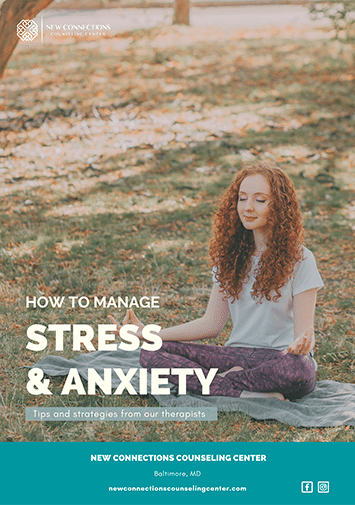Have you ever noticed feeling down during winter? Do you miss those bright sunny days that make you feel perky and full of energy? Discover how Daylight Saving Time can impact your mental health and contribute to seasonal depression and what you can do to prepare for the hour change.
Natural light has a big impact on how we feel. As we transition into winter and the days get shorter and darker, we lose a lot of sunlight exposure, which can affect our mood. But did you know Daylight Saving Time can impact your mental health?
During the winter months, sunrise is later and sunset is earlier. For many people, this means going to work before seeing the sun and leaving the workplace when it’s already dark. Some may actually go multiple days in a row without stepping outside into the sunlight.
Last Sunday we turned back our clocks one hour, which meant losing an hour of daylight. While this routine is 100 years old in the U.S., that extra hour of darkness has proven to affect mental health. In fact, studies indicate that depression, anxiety, and suicidal thoughts seem to rise around time change.
Although Daylight Saving Time doesn’t cause mental health problems, it can worsen them. As we get less sunlight, our serotonin and melatonin levels drop, which can lead to feelings of apathy and depression.
Plus, the time change marks the beginning of winter, when people spend most of their day inside, which leads to a more sedentary lifestyle, increased depression, and anxiety.
Therefore, if you have a pre-existing mental disorder or are more prone to seasonal depression, you should know how time change can impact you and what you can do to better adjust to it.
Daylight Saving Time’s Impact on Mental Health
If you struggle with mood disorders, the arrival of “fall back” can be particularly challenging, as it marks the start of the dark season when seasonal depression usually kicks in.
According to the American Academy of Sleep Medicine, the transition into and out of Daylight Saving Time increases the risk of sleep disruption, mood disorders, and suicide. Another study found that the transition to standard time increases the number of depressive episodes by 11%.
A possible explanation is that time change disrupts our circadian rhythms. That is our body’s internal clock that runs on a 24-hour cycle. One of the most important circadian rhythms is the sleep-wake cycle, which influences when we feel tired, fall asleep, and wake up. So, a one-hour change disruption in this cycle can have a serious impact on mood and even increase our anxiety.
What about Seasonal Depression?
Seasonal depression (or seasonal affective disorder, SAD) is a mood disorder characterized by symptoms of sadness and depression most prevalent during the colder and darker days of winter. However, it can also appear in the summer, but it is quite rare.
People who struggle with seasonal depression are much more susceptible to disturbances in their internal clocks. So, it makes sense that “fall back” can affect them even further.
When we don’t get enough sunlight exposure, we experience a drop in serotonin, the “happy hormone” and melatonin, which is responsible for the drowsiness we feel each day after dusk. This can make some of us feel more drowsy and depressed.
People with seasonal depression most commonly feel depressed during the fall and winter but feel well the rest of the year. So, if you’ve experienced this pattern for at least 2 years, you should talk to a professional about it.
3 Ways to Cope With Daylight Saving Time’s Impact on Your Mental Health
1. Spend more time outside
Try taking a walk first thing in the morning and enjoying that bright natural light. There is evidence that more light exposure, especially in the morning, can alleviate symptoms of SAD.
Spending time in nature can give you a mental health boost. Getting outside and enjoying the fresh air raises the oxygen levels in your brain, which helps increase your serotonin levels.
Also, move your desk or workspace closer to the window that gets more sunlight in. The more time you spend soaking up that daylight, the less sluggish and gloomy you will feel.
2. Try light therapy
If long morning walks are not for you, you may want to try a light box. A light therapy box mimics the effects of natural light, causing a chemical change in the brain that lifts your mood.
Light therapy should be started in the early morning, upon awakening, to maximize treatment response. Research shows that a single hour of light therapy can improve symptoms of depression.
Light therapy lamps have proven to be an effective treatment, that can stimulate the brain to release all those feel-good chemicals that help us feel happier. It’s recommended to talk to a professional about this form of therapy before using it.
3. Keep physically active
Exercise is a great way to naturally improve our mood and energy levels. When we exercise, our bodies release more mood-boosting hormones, that help us fight depression.
Exercising outside is even better as it allows you to breathe in the fresh air, soak up the sun, and connect with nature. If it is too cold to exercise outdoors, you can exercise close to a window at home or the gym.
Choose an activity you enjoy. Exercising doesn’t have to be an obligation. Dancing, riding a bike, gardening, or even walking your dog are all good forms of exercise.
Therapy for Depression in Baltimore, MD
Seasonal mood shifts are quite common, however, if you continue to struggle with feelings of depression, it is important to seek help from a mental health professional.
Recognizing your tendency to experience seasonal depression is the first step towards feeling better. Our therapists will help you understand your needs and emotions and will work out a plan with you to improve your well-being and get you through this cold, winter season.






